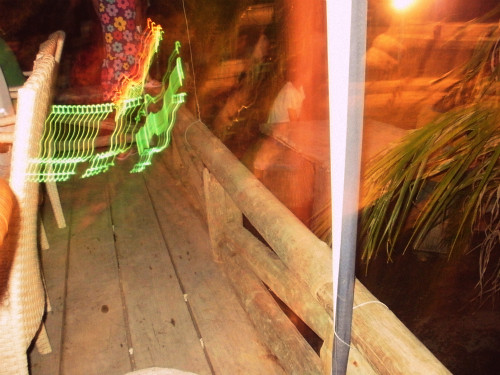What a name: “Pius”. I didn't know him well; I just knew that he served at San Isidro Labrador Chapel. His name may explain why my most vivid recollection of this neighbor is of his performance at my grandmother’s wake, at Saint Peter’s in Quezon City, three or four years ago. As if to render unthinkable the kind of rumors that circulated about any middle-aged bachelor who attached himself to church in these fallen times, Pius played his guitar with an innocence that approached the holy. He’d brought along the usual retinue of teenagers—Len Len, Jenny, Men Men, Rey Boy, among others—who otherwise would have had nothing else to do but whistle the time away on street benches or place their fathers’ bets for the San Lazaro horse race (with its racetrack that evoked the socio fundadores, in sepia).
Led by Pius, and flanking the open casket of my father’s mother, they sang a chorus of church songs. During Mass, Pius sort of doubled as a lay minister, spreading cloth over a makeshift altar and assembling the chalice and ciborium at a makeshift tabernacle. After Mass he put his guitar in a corner and stayed with us, cleaning up cookie crumbs left by family friends whom he had also encouraged to mark their condolences in the guest book.
Pius.
Well, he died, too. He was forty-seven. Diabetes. He spent his last days walking around the neighborhood with his neck covered by a makeshift scarf; he had this wound on the back of his head, from the nape downwards, this wound that wouldn’t heal and he wouldn’t show and which people who had nevertheless seen it described as being the size of a plate. “That’s impossible,” I thought, when mother announced at the dinner table that Pius had died. She wasn't kidding me. “Maybe the size of a saucer,” I went on thinking, “but not a dinner plate, I shouldn’t think. That’s horrible.”


No comments:
Post a Comment